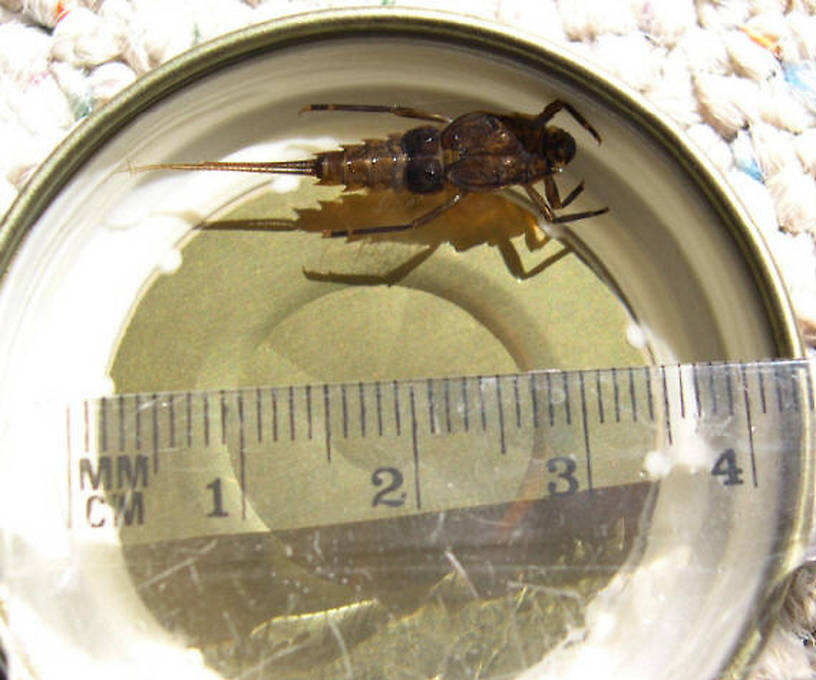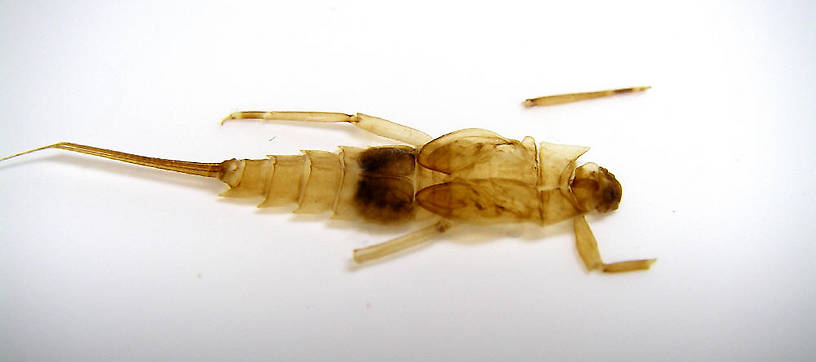
Hex Mayflies
Hexagenia limbata
The famous nocturnal Hex hatch of the Midwest (and a few other lucky locations) stirs to the surface mythically large brown trout that only touch streamers for the rest of the year.


Neoephemera Mayfly Nymph Pictures
This specimen was sent to me for identification by Caleb Boyle, who did such a good job taking pictures of his mystery mayfly that, after identification, I asked him for permission to add it to this site, which he granted. This is great luck, since Neoephemera is a rare mayfly and it's unlikely I would ever have collected a specimen for the site myself.
Caleb collected it in mid-late May of 2004 either McDowell County or Ashe County in North Carolina, in a riffle less than two feet deep in a cold trout stream. He reared the nymph into a dun, whose wings appear in one of the photos below. He describes the specimen as follows:
Nymph exoskeleton:
Body: 16-17mm
Tails: 3, equal length, 13mm
Found on the surface of the water. The gill cover covers ab. segments 3-5.
Subimago:
Body: 16mm, dark brown/ olive
Tails: 3, equal length, 14mm
Wings: dark slate color, large hind wings.
I don't know to which species it belongs, but its size rules out the most common one in the genus, Neoephemera bicolor. It matches the size of Neoephemera purporea so that is a likely other possibility, but there are two other candidate species (Neoephemera compressa and Neoephemera youngi) about which I have no information, so I can't rule them out.
Disregard the camera, region, and exact date listed on these photos. I still need to update the site to accommodate user contributions which don't use my equipment.







This mayfly was collected from unknown in North Carolina on May 20th, 2004 and added to Troutnut.com by Troutnut on March 20th, 2007.
Discussions of this Nymph
This is the first specimen by another photographer that I've included on Troutnut.com. Several excellent photographers have expressed interest in contributing, and I hope to start getting their pictures up this year in addition to mine. Before I start doing that on a large scale, I have a few days worth of programming I'll need to do to prepare the site. In the meantime, enjoy this one. :)
Start a Discussion of Nymph
Neoephemera Mayfly Nymph Pictures
Collection details
Date: May 20th, 2004
Added to site: March 20th, 2007
Author: Troutnut

